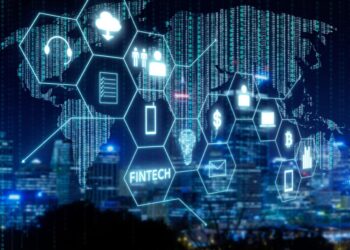The financial technology, or fintech, sector is a relentless engine of change, constantly challenging the established order of traditional banking and financial services. What began as a series of digital experiments has matured into a global force that is not just disrupting the market but actively redefining it. The latest wave of innovations is moving beyond simple digital payments, venturing into the complex realms of artificial intelligence, blockchain, and hyper-personalized consumer experiences. This rapid evolution is driven by a consumer base that demands speed, transparency, and accessibility, pushing the industry to innovate at an unprecedented pace. This article will delve into the cutting-edge innovations that are shaping the fintech landscape, exploring how they are democratizing finance, enhancing security, and creating a more inclusive global economy.
At its core, traditional finance has long been characterized by layers of bureaucracy, slow processes, and a reliance on intermediaries. Fintech’s mission, since its inception, has been to strip away these layers. The newest market innovations are taking this a step further, not by simply digitizing existing processes, but by creating entirely new financial products and services that were once unimaginable. This shift is powered by technologies that can process vast amounts of data in real-time, authenticate identities in seconds, and execute transactions without the need for a central authority. It’s an evolution from simply providing online banking to building an entirely new financial ecosystem.
The Power of Hyper-Personalized Financial Products
One of the most significant trends in modern fintech is the move towards hyper-personalization. Traditional banks often offer one-size-fits-all products, from savings accounts to loans. The latest fintech innovations, however, are leveraging data analytics and AI to tailor financial solutions to the individual. By analyzing a user’s spending habits, savings goals, and risk tolerance, these platforms can offer bespoke financial advice, investment opportunities, and credit products.
- A. AI-Driven Financial Planning: Platforms are now using artificial intelligence to create dynamic, personalized financial plans that adapt in real-time to a user’s changing life circumstances. For example, if an AI detects that a user is saving for a down payment on a house, it might automatically adjust their budget and investment strategy to help them reach that goal faster. This proactive, always-on financial advice mimics the role of a human financial advisor but at a fraction of the cost and with instant accessibility.
- B. Embedded Finance: This innovation allows non-financial companies to offer financial services directly within their own applications. A retail store app, for example, can now offer its own credit line or “buy now, pay later” service without redirecting the user to a third-party bank. This seamless integration creates a frictionless customer experience and opens up new revenue streams for businesses. It’s an example of how financial services are becoming invisible, woven into the fabric of everyday digital life.
- C. Behavioral Economics in Action: Fintech platforms are applying principles of behavioral economics to help users make smarter financial decisions. By using gamification, nudges, and visual feedback, these apps encourage positive habits like saving and investing. For example, an app might send a user a notification saying, “You’ve saved 10% more this month than last!” to reinforce good behavior.
- D. The Gig Economy’s Financial Backbone: The rise of the gig economy has created a new segment of workers with unique financial needs. Fintech is responding with innovative products like instant payment for freelancers, micro-insurance policies, and credit solutions based on non-traditional income streams. This caters to a demographic that has historically been underserved by conventional financial institutions.
Blockchain and Decentralized Finance (DeFi)
While cryptocurrencies like Bitcoin grabbed the headlines, the underlying blockchain technology is the real innovation reshaping fintech. Blockchain’s distributed, immutable ledger is powering a new wave of decentralized finance (DeFi) applications that aim to eliminate intermediaries and make financial services more transparent and efficient.
- A. Smart Contracts: These self-executing contracts, built on the blockchain, automatically execute the terms of an agreement when predefined conditions are met. For instance, a smart contract could automatically release payment to a supplier once a shipment is confirmed by an independent sensor. This eliminates the need for lawyers, banks, and other intermediaries, drastically reducing costs and time.
- B. Decentralized Lending and Borrowing: DeFi platforms are allowing users to lend and borrow digital assets directly from one another without the need for a traditional bank. The terms of the loan are encoded in a smart contract, and the process is automated, transparent, and often provides more favorable interest rates.
- C. Tokenization of Assets: This innovation involves converting a physical or traditional asset, such as real estate, art, or stocks, into a digital token on a blockchain. This process, called tokenization, makes it possible to own and trade fractional shares of these assets, making high-value investments accessible to a wider pool of investors and increasing market liquidity.
- D. Cross-Border Payments: The traditional system for international money transfers is notoriously slow and expensive. Blockchain-based solutions are providing a faster, cheaper, and more transparent alternative. Transactions that once took days and incurred significant fees can now be completed in minutes for a fraction of the cost, making global commerce more efficient.

Enhancing Security with Biometrics and AI
As financial services become more digital, security is paramount. The newest innovations in fintech are leveraging cutting-edge technology to create more robust security protocols that are also more convenient for the user.
- A. Behavioral Biometrics: Beyond traditional biometrics like fingerprints or facial recognition, fintech is now using behavioral biometrics to authenticate users. This technology analyzes a user’s unique patterns of interaction, such as their typing rhythm, mouse movements, or the way they hold their phone. This creates a continuous, passive layer of security that can detect fraudulent activity in real-time without inconveniencing the user.
- B. AI-Powered Fraud Detection: AI algorithms are now capable of analyzing vast datasets to identify and predict fraudulent behavior with a precision that human analysts cannot match. These systems can instantly spot anomalies in a user’s spending patterns, such as a large purchase in an unusual location, and flag it for review, preventing fraud before it even happens.
- C. Passwordless Authentication: The era of remembering complex passwords is nearing its end. Fintech platforms are moving towards passwordless authentication using a combination of biometrics, secure tokens, and magic links, which significantly improves both security and user experience.
- D. Immutable Transaction Records: Blockchain’s inherent security features provide a tamper-proof record of all transactions. This transparency and immutability make it virtually impossible for malicious actors to alter or erase transaction data, providing an extra layer of trust and security.
The Challenge of Regulatory and Ethical Oversight
The rapid pace of fintech innovation presents significant challenges for regulators and policymakers. Financial regulations were designed for a world of traditional banking, and many are ill-equipped to handle the complexities of decentralized finance, cryptocurrencies, and AI-driven lending.
- A. The Regulatory “Sandbox”: To foster innovation while ensuring consumer protection, many governments are creating “regulatory sandboxes.” These are frameworks that allow fintech companies to test new products and services in a controlled environment under the supervision of regulators.
- B. Consumer Protection in DeFi: The decentralized nature of DeFi makes it challenging to hold a single entity accountable in the event of a scam or system failure. Regulators are grappling with how to protect consumers in a market with no central authority.
- C. Algorithmic Bias: The use of AI in credit scoring and loan applications carries a significant risk of perpetuating historical biases. If an AI is trained on data that reflects past discrimination, it could inadvertently deny financial services to certain demographic groups. Ensuring algorithmic fairness is a critical ethical challenge for the industry.
- D. Data Privacy: As fintech platforms collect more personal financial data, concerns about privacy and security grow. Companies must be transparent about how they use and protect this data, and consumers need clear and robust control over their information.

Fintech’s Future: A Seamless and Inclusive Ecosystem
Looking ahead, the future of fintech is not just about isolated innovations; it’s about the creation of a seamless, interconnected financial ecosystem. The lines between banking, lending, investing, and insurance will continue to blur, and financial services will become so integrated into our daily lives that we may not even notice them. The ultimate goal is to create a more inclusive global economy where everyone, regardless of their location or socioeconomic status, has access to the tools they need to manage their financial lives effectively. The journey is far from over, but the latest market innovations show that the destination is within reach.












